Motorola Announces New Moto Z4: Moto's 2019's Flagship
by Andrei Frumusanu on May 30, 2019 9:00 AM EST- Posted in
- Mobile
- Smartphones
- Motorola
- Moto Z4
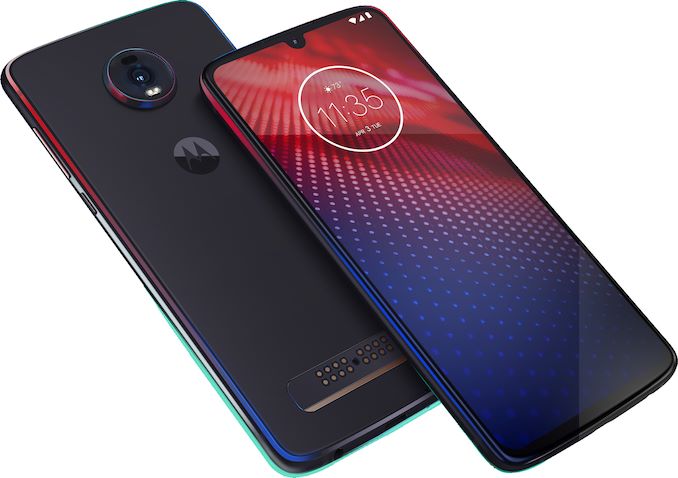
Today Motorola launches the new Moto Z4 (stylised: moto z4). The Z4 follows up on last year’s Z3 and represents Motorola flagship device for 2019. Yet the Z4 isn’t targeting the flagship segment per se; the company attempts to target the “premium” segment, the category of devices just below common flagship phones, yet still offering most of the specifications and features at a lower price point.
The Moto Z4 comes with a brand-new 48MP camera as well as Qualcomm’s newest Snapdragon 675 SoC, all in an bezel-less OLED display that has a screen-to-body ratio competing against the best flagship devices from the competition.
| moto z4 | |||
| moto z4 | |||
| SoC | Snapdragon 675 2x Kryo 460 (CA76) @ 2.0GHz 256KB L2 6x Kryo 460 (CA55) @ 1.7GHz 64KB L2 Adreno 612 |
||
| DRAM | 4GB LPDDR4X | ||
| Storage | 128GB | ||
| Display | 6.39" OLED 2340 x 1080 (19:9) |
||
| Size | Height | 158 mm | |
| Width | 75 mm | ||
| Depth | 7.35 mm | ||
| Weight | 165g | ||
| Battery Capacity | 3600mAh | ||
| Wireless Charging | (Moto Mod only) | ||
| Rear Cameras | |||
| Main | 48MP IMX586 0.8µm pixels (1.6µm 4:1 12MP binning) f/1.7 lens OIS PDAF & Laser Autofocus |
||
| Telephoto | - | ||
| Wide | - | ||
| Extra | - | ||
| Front Camera | 25MP 0.9µm pixels (1.8µm 4:1 6.25MP binning) f/2.0 lens |
||
| I/O | USB-C 3.5mm headphone jack |
||
| Wireless (local) | 802.11ac Wave 2 Wi-Fi Bluetooth 5.0 LE NFC |
||
| Other Features | Under-screen optical fingerprint sensor | ||
| Dual-SIM | 1x nanoSIM | ||
| Colours | Flash Grey, Frost White | ||
| Launch Price | $499.99 | ||
The new Moto Z4 is powered by Qualcomm’s newest Snapdragon 675 SoC which was announced in October last year. The chipset differs quite a lot from past 600-series iteration by the fact that it uses a new high-end based Cortex-A76 / Kryo 460 CPU configuration with two cores at up to 2GHz. So although the Z4 doesn’t quite use a flagship SoC like the Z3’s previous Snapdragon 835, it should represent a performance upgrade in user experience due to the newer IP. Gaming wise, we’re still not quite sure how the new Adreno 612 will compare to the Z3’s Adreno 540, but we’re not expecting large performance boosts, if at all.
The SoC’s 11nm LPP manufacturing node along with a large 3600mAh battery should provide the new Z4 with plenty of battery life, and represents a big capacity upgrade over the Z3’s 3000mAh battery even though Motorola was able to keep the dimensions largely in check.
In terms of dimensions, the phone is characterised by the 6.39” AMOLED screen. The new design has a modern full-screen panel with minimal bezels and uses a dew-drop notch for the front camera. The resolution remains FHD with an exact 2340 x 1080 to be precise, resulting in a 19:9 aspect ratio.
The elongated aspect ratio over last year’s 18:9 display explains the Z4’s larger screen dimensions: The actual width of the phone hasn’t gone up over the Z3, it actually has gone down as it’s now 1.5mm narrower, down to 75mm.
Where Motorola did compromise a bit is in the thickness, as it’s now 8% thicker to 7.35mm, most possibly due to the new larger battery capacity. Weight has also gone up from 158g to 165g, which however is still very light for a phone of its size, compared to the designs of some other vendors.
The speaker design of the Z4 is a bit weird: Here Motorola places the main speaker at the top of the phone instead of the usual bottom location. It’s also a single speaker design.
At the bottom of the phone there’s a large surprise: A 3.5mm headphone jack. Indeed this is quite a big deal for the Z4 because this is a change compared to all previous generation Z phones starting from 2016 – which all had been released without a jack.
The fact that Motorola’s marketing materials have several press shots advertising the headphone jack, along with the hilarious jab of a shot of the USB-C port along with the 3.5mm connected at the same time, means that the company is aware that this is indeed a better solution for user experience than having no headphone jack. I think in general Motorola here needs to be applauded for the decision. The move points out that the industry’s removal of headphone jacks has indeed been stupid, and there’s real consumer need and demand for it, otherwise they wouldn’t have brought it back.
One of the main features of the Z4 is the new camera. I feel like a broken record here given how many vendors this year have gone for the same design: The Z4 is one of the many phones employ’s Sony’s new IMX586 camera sensor. The module is characterised by its native 48MP resolution, which is mostly used in a 4:1 pixel binning mode resulting in 12MP shots with effective 1.6µm large pixels.
The large MP sensor allows for quite good digital zooming/cropping in well-lit scenarios, which partly makes up for the fact that the phone doesn’t have any other rear camera modules. In fact, at zoom factors over 2x, Motorola uses a computational super zoom mode that is promised to work similarly to Google’s super zoom on the Pixel phones.
For low-light, Motorola has a special “Night Vision” mode which makes use of computational photography and stacks 8 capture frames together to achieve better sensitivity and dynamic range. Motorola actually looks to be quite competitive in terms of the various camera capture modes as it makes use of machine learning for modes such as “AI Portrait Lighting”, “Cinemagraph Mode”, “Spot Color Mode”, “Live Filters” and AR stickers.
The rear-camera optics are an f/1.7 aperture lens along with OIS. Focusing is achieved by regular PDAF on the sensor, augmented by a laser autofocus module.
The front-camera also isn’t a slouch: The sensor is a 25MP unit with an f/2.0 lens. In bright conditions the sensor can use its full resolution and makes use of its 0.9µm pixels, which in low-light mode it’s able to use pixel binning to capture 4x more light in a 6.25MP / 1.8µm effective pixel mode.
The Moto Z4 comes with compatibility for Motorola’s Moto-Mods, featuring the characteristic connector port at the back of the phone. All existing Moto-Mods can be used on the Z4, including the 5G Moto-Mod.
Finally, the pricing of the Moto Z4 comes in at $499.99 and will be available in “Flash Grey” and “Frost White” colours, with a fixed memory configuration of 4GB RAM and 128GB of NAND storage. The phone represents tough competition for Google’s Pixel 3a XL, offering a better SoC, on paper a more capable camera, a more modern design, although lacking stereo speakers.
The Moto Z4 will be available June 13th on Verizon in the US, with later availability this summer in Canada.
Related Reading:
- Motorola Announces One Vision with Exynos 9609
- Qualcomm Announces Snapdragon 675 - 11nm Mid-Range Cortex A76-Based
- Motorola’s 5G Moto Mod for Moto z3 Now Available on Verizon
- Motorola Announces Moto g7 Family Line-up
- Moto 5G Mod at Snapdragon Summit: Lots of Antennas, and S855 Inside?
- Motorola Announces Moto g6 and e5


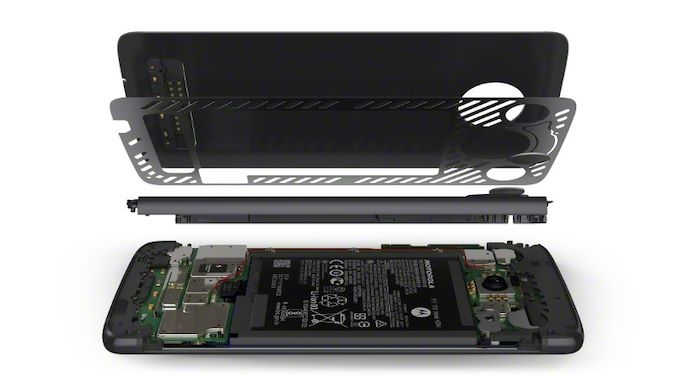
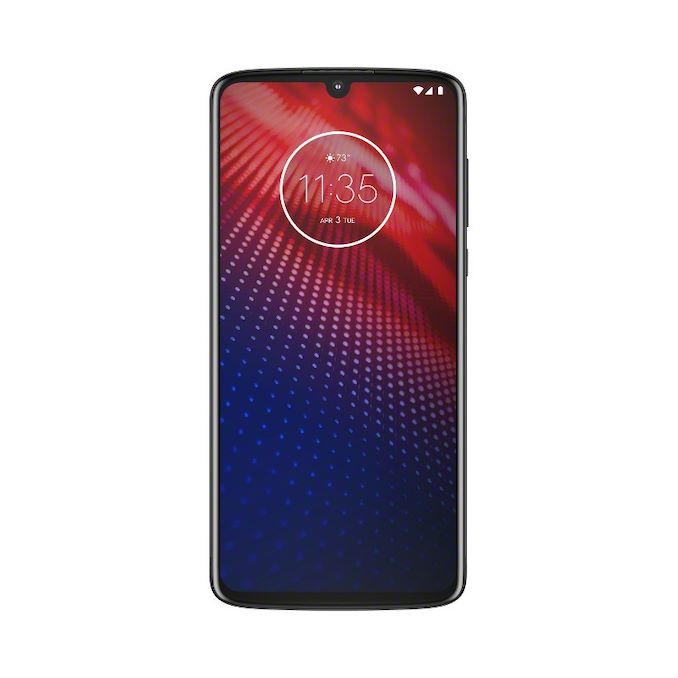


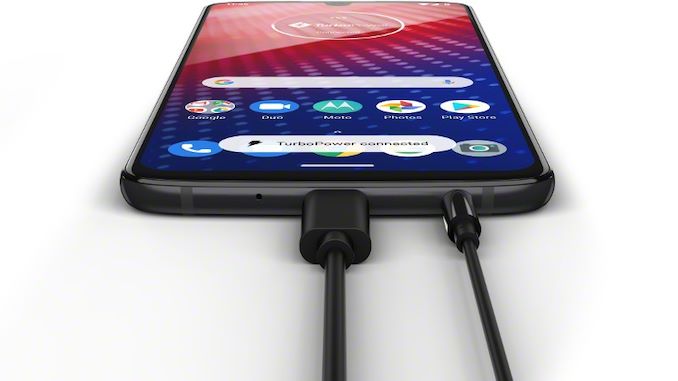
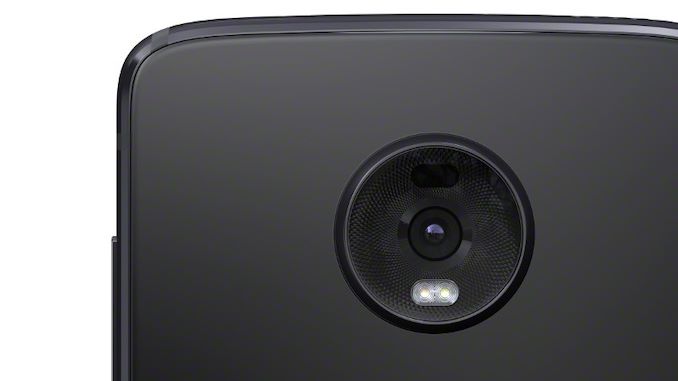
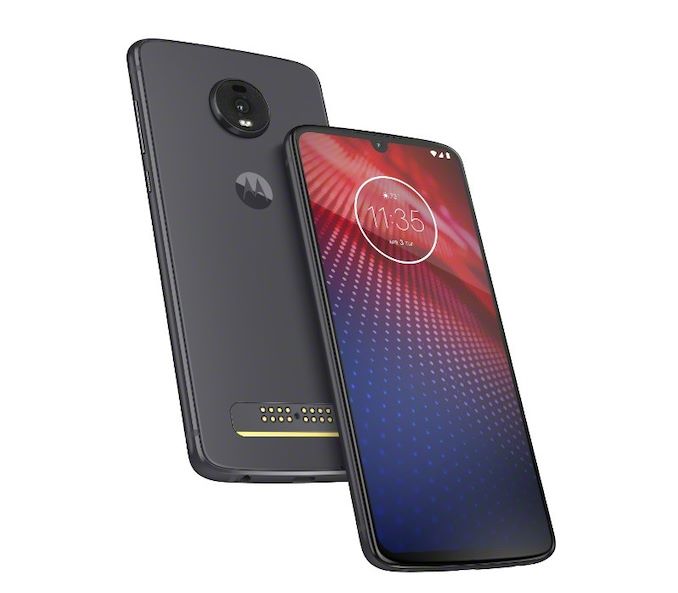
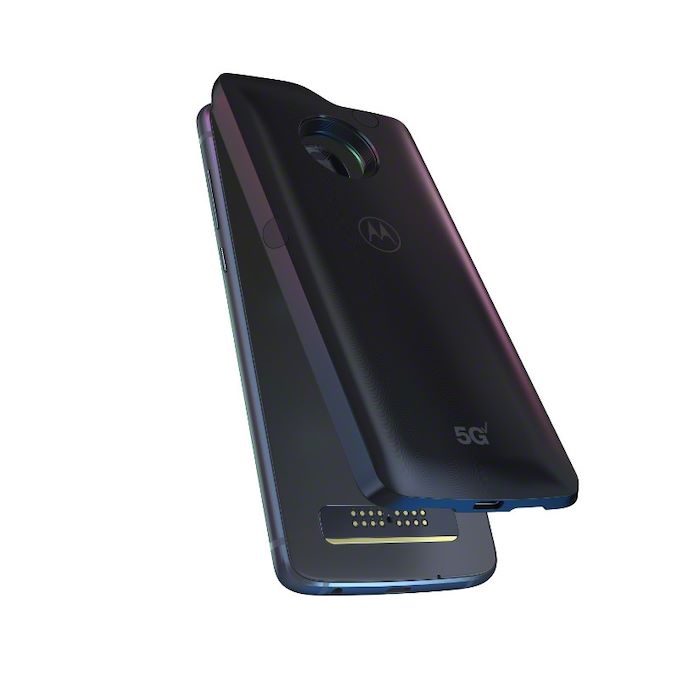
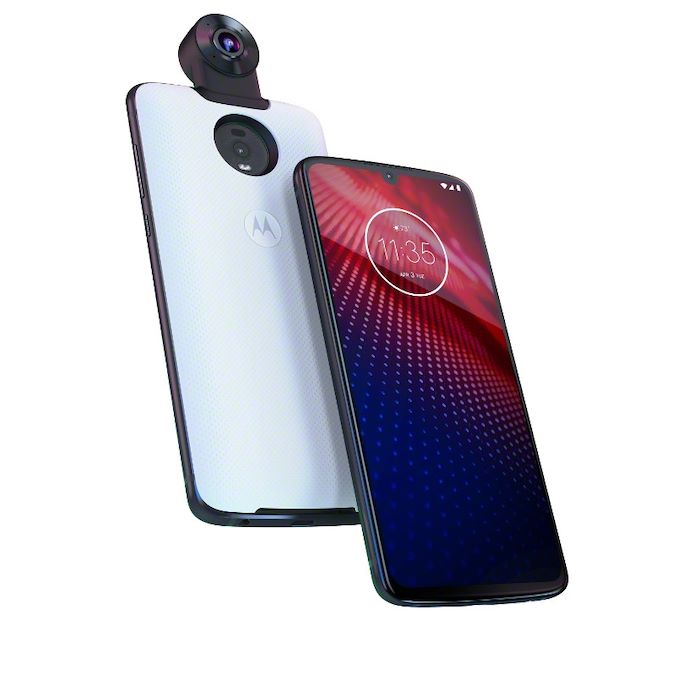
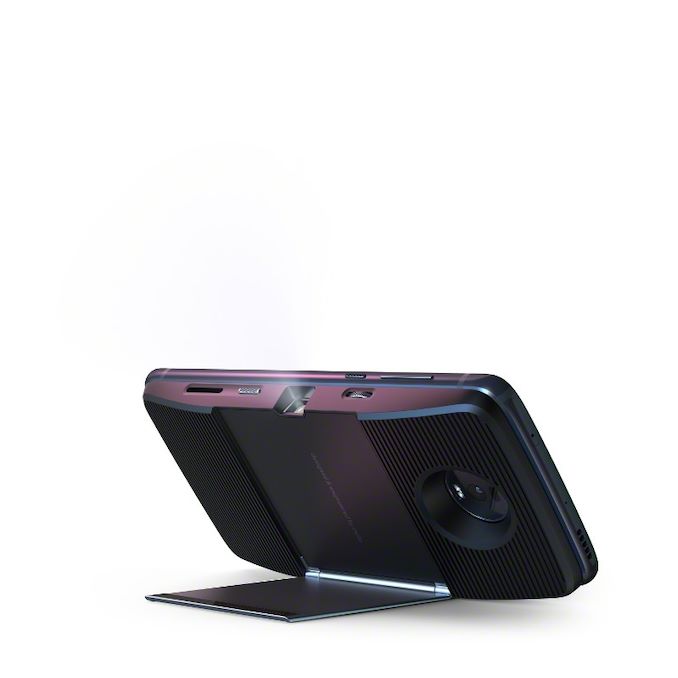








85 Comments
View All Comments
Tams80 - Friday, May 31, 2019 - link
You're going to have to post some evidence to back that up, matey.RSAUser - Saturday, June 1, 2019 - link
Back it up. Use it every day, even use it with my BT headphones when their battery runs out or I am listening to something higher quality.Lord of the Bored - Sunday, June 2, 2019 - link
I use the 1/8" jack regularly for plugging my pocket computer into my home stereo as well as my car stereo. I only started using bluetooth headphones because I'm a bad judge of cable length and pulled my pocket computer off the table more than once.In fact, I had two ironclad requirements for the device I bought a few months ago to replace one with a broken screen: It must have a headphone jack, and it must not have holes in the screen. So you might be right that people who use phones with notches and no headphone jacks don't care. Because people that DO care buy systems that don't have those form-over-function design compromises.
UtilityMax - Monday, June 24, 2019 - link
None miss it? You need to interact outside of the millennial crowd. I had nothing but trouble with BT earbuds. Their negatives easily outweigh lack of wire.Now look at all the devices that are now coming back with the 3.5mm connector.
Huawei Mediapad M6
Pixel 3A/XL
Samsung Galaxy A50, and now the Moto X series.
People shopping for a budget-priced phone are looking for a real solid hard performance and features to price ratio, and erasing a headphone jack will not increase the value of the phone, no matter what Apple, OnePlus, or Google is going to tell you.
And when you look at the price performance of BT cans to a good wired headphones, the BT devices lose big time. My 40 Koss PortaPro cans or 60 dollar Sennheiser PX100 have better sound quality than devices that cost twice more, never run out of battery charge, never suffer from weaking battery, and I never need to go up to the second floor to unsync the headphones from a laptop in order to have it now plugged into a smartphone. Compare to the flimsy construction of wireless cans. Even those costing well over 100 bucks feature cheap flimsy construction, and you'll be lucky if they last a year of heavy use.
TrevorH - Friday, May 31, 2019 - link
Was there any mention of possible future Z4 phones like a Z4 Force? They didn't do a Force model for the Z3 series so the Z2 Force is currently the most recent shatterproof one available.rocketman122 - Friday, May 31, 2019 - link
nothing special, specs wise. my 3 year old v20 has better specs.$500? shuv it up your anus.
gokul94 - Friday, May 31, 2019 - link
Andrei, are you reviewing the OnePlus 7 Pro / 7? When can we expect the review?Looking forward to it !
sonicmerlin - Saturday, June 1, 2019 - link
That is a really handsome looking phone.nostriluu - Saturday, June 1, 2019 - link
What kind of expression is "newer IP?" It is more refined regardless of "intellectual property." Claims around IP have a giant distorting effect on the mobile market, and it is strange to see a "technical" blog using the phrase.yacoub35 - Sunday, June 2, 2019 - link
Looks like a good phone for $299.